The Secretes of the Reverende Maister Alexis of Piemount1 contains a formula for dying leather a scarlet red color using a mixture of crab shell ashes, madder and ochre.
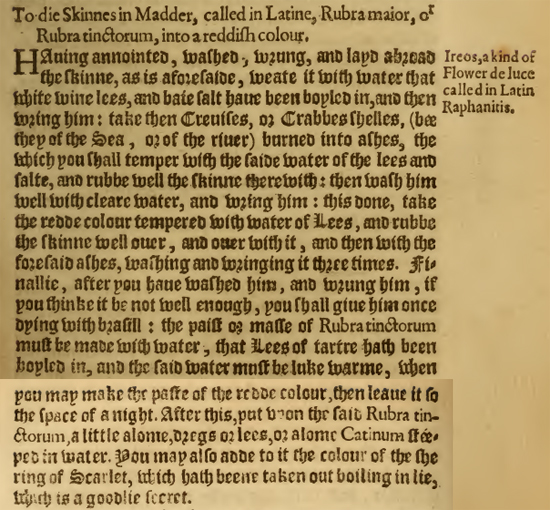
Though an alternate translation2 is available, my attempt at a direct translation would be as follows:
“To die Skinnes in Madder, called in Latine, Rubra major, or Rubra tinctorum, intoa reddish colour.
Having annointed, washed, wrung, and layd abroad the skinne, as is aforesaide, weate it with water that white wine lees, and baie salt have been boyled in, and then wring him: take then Creuiles, or Crabbesshelles, (bee they of the Sea, or of the river) burned into ashes, the which you shall temper with the saide water of the lees and salte, and rubbe well the skinne therewith: then wash him well with cleare water, and wring him: this done, take the redde colour tempered with water of Lees, and rubbe the skinne well over, and over with it, and then with the foresaid ashes, washing and wringing it three times. Finallie, after you have washed him, adn wrung him, if you thinke it be not well enough, you shall give him once dying with brasill: the paste or masse of Rubra tinctorum must be made with water, that Lees of tartre hath been boyled in, and the said water must be luke warme, when you may make the paste of the redde colour, then leave it to the space of a night. After this, put upon the sasaid Rubra tinctorum, a little alome, dregs or lees, or alome Catinunm steeped in water. You may also adde to it the colour of the ring of Scarlet, which hath beene taken out boiling in lie, which is a goodlie secret.”
margin note: “Ireos, a kind of Flower de luce called in Latin Raphanitis.”
From the source material, I’m reading the instructions on the dye process for this as follows:
1) Begin by cleaning the skin thoroughly, then wring it out.
This statement in the process would lead me to believe that the dying itself was included as a part of the tanning process. In the current manner of purchasing a vegetable tanned leather that’s already been tanned, the skin should not need to be cleaned again – since the fat and residual flesh bits are already scraped off for us.
This being the case though, it is of note that the soaking and wringing out of the skin should still be utilized so that the moisture in the skin will more readily accept any color that it is exposed to (as opposed to using the dye on a dry piece of leather). This is generally the case for modern stains and dyes that are water based as well. Damp leather allows water based commercially available products to soak in more as it blends into the present moisture.
2) Preparing the skin
In this case, the Maister references preparing water by boiling sea salt in it, then after it has cooled down add to it the yeasty mixture that’s left at the bottom of the vat that white wine has been fermented in. He then makes a note to annoint the skin with this mixture. In this case, since we are previously told to lay the skin out, we’re not doing a full dunking in the mixture. We can instead brush on a layer of the mixture so that it will absorb the other materials more readily.
3) Prepare and apply the dye paste
We are told to begin by burning crab shells to ash, then adding the water that we used to annoint the skin to it in order to make a paste. The paste is then rubbed into the skin. After it’s been rubbed into the skin, we should then wash the skin down with clean water and wring the skin back out. This part of the process should be repeated three times.
4) Alternatives for color
We’re told a couple of foot notes here that I find interesting. It’s as if the Maister is saying that if you’re not happy with the color of red here, you have some additional options after the initial process has been completed. The first option would be to dye with brasilwood once. The second option is to create a
paste of madder by adding warm water that has a bit of tarter in it to the root as it’s broken down. Leaving the paste overnight would presumably be so that the color can intensify somewhat. After it’s set overnight, the Maister indicates that you should add a bit of the lees and alum. I’m assuming that the reference to the “ring of scarlet” is an incorporation of crushed insects3, since this was a commonplace practice to get the richer red dyes in the region at the time of the writing.
First Attempt
First of all, crab shells are hard to find. I ordered some organic crab fertilizer that I was able to find on Amazon, after confirming that it was only crab without any additional additives or chemicals. So that part was solved after some digging. Secondly, burning crab shells to ash creates a smell not unlike what I would envision zombie farts to resemble. I put the crab shells into a packet of aluminum foil and placed them on the grill for several hours. I’d estimate that it was burning for at least 4 hours before the stench started to subside. After the shells were rendered to ash, they didn’t smell nearly as bad, but still had a rather unpleasant tone.
After several attempts at finding a vineyard that still had lees available, and finding none, I created a batch of white wine from an inexpensive boxed wine kit. Once the fermentation was complete, I siphoned off all but the gunk at the bottom of the batch.
As indicated in the original recipe, I prepared the skin with water that had been treated with the lees and sea salt. I then added the water into the crab shell ash until it had become a paste, as was indicated (on the side burner for my grill). After the three treatments though, I was not seeing much of a red in the leather sample, just a bit of black from some of the ash. I added some madder and ochre paste to the swatch, as well as to a clean swatch for comparison. It was worth noting here that the treated piece did get a little darker than the piece that was just using the madder/ochre mixture, but neither piece was really the red that I was expecting.
The ochre/madder mixture gave a kind of mauve color as you can see below. I may utilize this pigment in further use, but I don’t see significant enough difference in the treatment of the crab shell ash that I would say that it works as expected.
First photo is the ash boiling down to a paste with the treated water. The second photo here is comparing the ochre/madder mixture (left) and the treated swatch with the ochre/madder mixture (right).
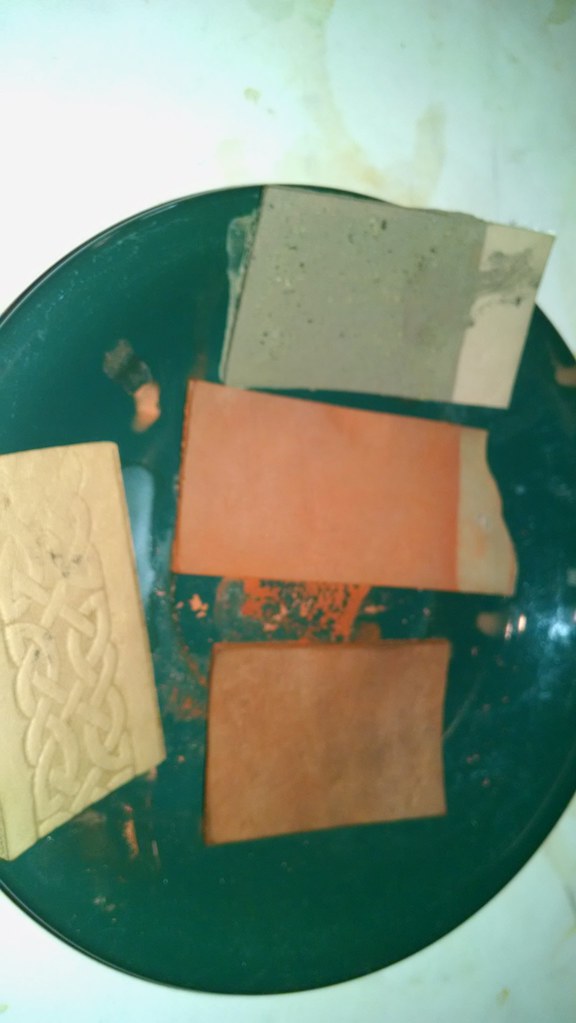
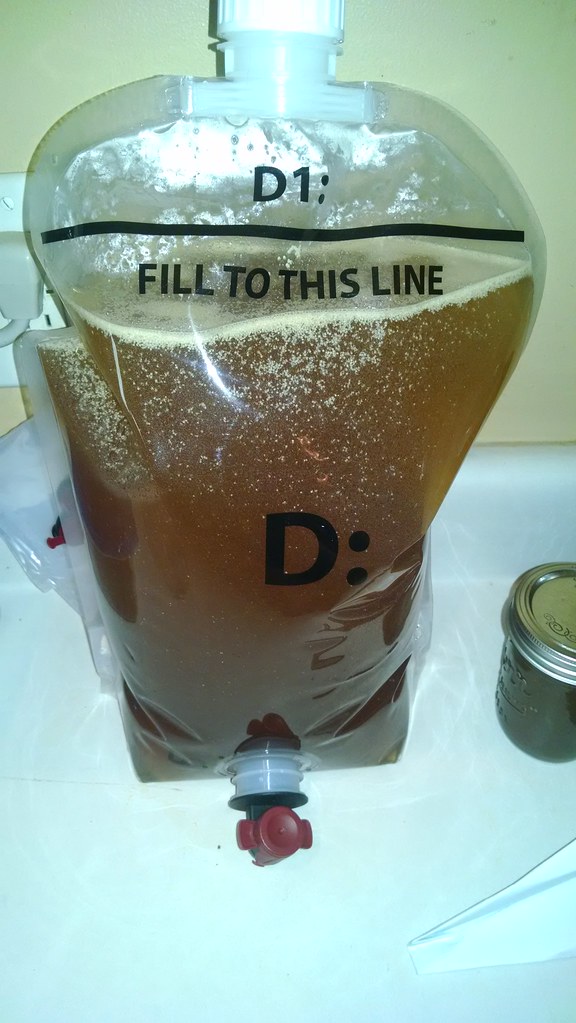
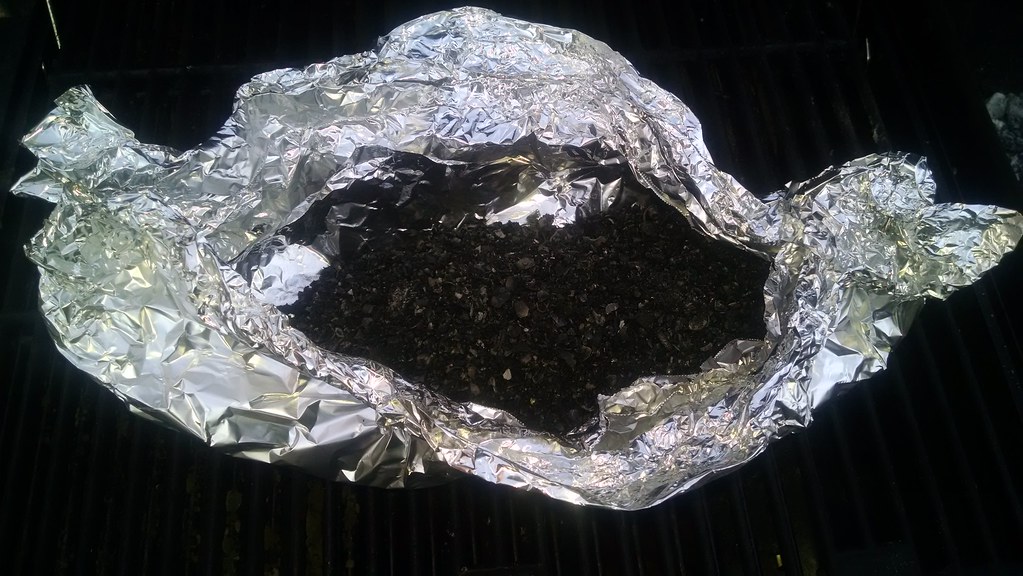
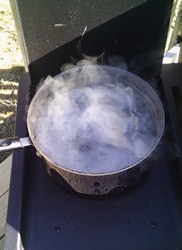
- The secrets of the reverend Maister Alexis of Piemont by Girolamo Ruscelli. OL25228326M
Translated from French into English by William Ward
Screen shot is of page 179 of the viewable pdf on Open Library - Medieval Leather Dying by Marc Carlson, original compilation by Ron Charlotte also has a direct translation available.
- Wikipedia, entry about what kermes is, along with entries on usage